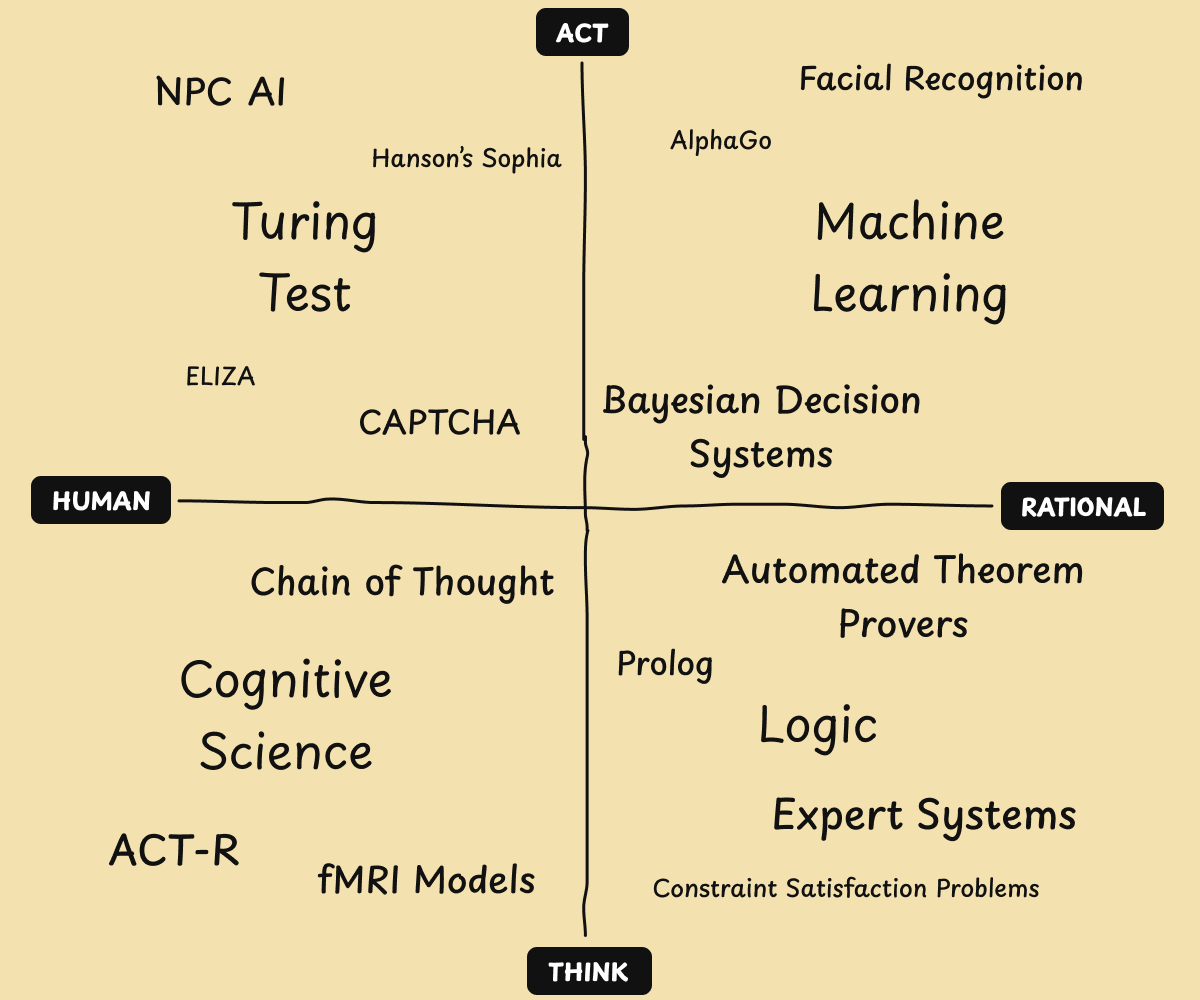Intelligence

Men only learned how to fly when they stopped imitating birds.
Paulo Coelho
The Turing Test was proposed by Alan Turing in 1950 as a method to determine whether a machine can exhibit intelligent behavior. In the classic setup, a human judge interacts with both a machine and a human through text-based communication. If the judge cannot reliably tell which is which, the machine is said to have passed the test. The fundamental idea behind the Turing Test is that intelligence is determined by behavior that is indistinguishable from humans.
AI researchers have devoted little effort to passing the Turing test, believing that it is more important to study the underlying principles of intelligence. The quest for "artificial flight" succeeded when engineers and inventors stopped imitating birds and started using wind tunnels and learning about aerodynamics. Aeronautical engineering texts do not define the goal of their field as making "machines that fly so exactly like pigeons that they can fool even other pigeons." This has become the current paradigm for studying and engineering intelligence, where we're building machines that behave intelligently but not necessarily by imitating humans.
Zooming out from the prevailing doctrine and the Turing Test, there are different schools of thought when it comes to the concept of intelligence, which loosely partition over two axes:
| Acting vs Thinking | Human vs Rational |
|---|---|
| Acting refers to exhibiting behaviors that are perceived to be intelligent. Thinking treats intelligence as a property of internal thought processes and reasoning. | Human refers to emulating human behavior. Rational is, loosely speaking, intelligence as doing the "right thing". (Remember, humans aren't always rational.) |
We can break down this down further into quadrants:
| Acting Human: Self-explanatory. This is the "Turing Test" approach, where intelligence is measured as fidelity to human performance. | Acting Rationally: Places the focus on systems that achieve the best outcome (or expected outcome), while being less prescriptive about the "how". |
| Thinking Human: Where we study how humans think so we can get machines to model our thought processes. This is cognitive science. | Thinking Rationally: This is essentially logic; developing the processes to reason about objects and their relations to produce correct conclusions. |
Here are some examples that fall into each quadrant:

The "Acting Rationally" approach is special because it has two advantages over the rest:
- It is more general; thinking correctly is just one of several possible mechanisms for achieving rationality.
- It is more amenable to scientific development. The objective of rationality can be defined mathematically and generally, allowing us to work backwards to engineer systems that provably achieve it.
Thus, it's not surprising that "Acting Rationally" has become the dominant approach in the field of AI. It started with simple systems built on knowledge bases with logical rules and has since evolved to incorporate probabilistic reasoning and machine learning.
However, the other approaches haven't gone extinct. They're alive and well, although a tad overshadowed. All of these frameworks progress together in an interdisciplinary way, cross-fertilizing each other (e.g. computer vision incorporates learnings from the neuro-physiology of the human eye, while machine learning methods have led to better imaging of the brain).
So, in many of our explainers, we focus on understanding and building machines that act rationally.